The History of Diamonds: From Mine to Masterpiece
Diamonds have been dazzling people for generations, as a strong symbol of love, strength, and forever beauty. But have you ever wondered just how these precious gems go from deep within the Earth to ending up as dazzling centrepieces for exquisite jewellery? In this blog, we’re about to embark on an interesting history of diamonds-how they formed billions of years ago and how they’re being shaped into the ageless pieces of jewellery that we all adore today.
The Formation of Diamonds: A Journey Through Time
In addition to being stunning, diamonds are quite old. Diamonds are formed 100 miles below the surface of the Earth, under intense heat and pressure, between 1 and 3 billion years ago. This is how it occurs
- Carbon Crystallisation: Diamonds are made of pure carbon atoms arranged in a crystal structure. Under immense pressure and temperatures exceeding 2,000 degrees Fahrenheit, carbon atoms bond to form diamonds.
- Volcanic Eruptions: Diamonds are transported nearer to the surface by volcanic action.
They move along kimberlite pipes, which are uncommon volcanic conduits.
This natural process is what makes diamonds one of the hardest materials found on Earth with a perfect score of 10 on the Mohs scale of mineral hardness.
The Early History of Diamonds
Around the fourth century BC, diamonds were first found in India, where their remarkable hardness and brilliance made them valuable commodities. The following are significant turning points in the history of diamonds:
- Ancient India: Because of their endurance, diamonds were utilised as engraving tools and talismans.
- Middle Ages: By the 14th century, diamonds had become symbols of power and wealth among European monarchs.
- The Koh-i-Noor Diamond: Possibly the most famous diamond in the world, it was mined in India and passed through the hands of Mughal emperors, Persian shahs, and British royalty.
 (The Diamond Mining & Process)
(The Diamond Mining & Process)
Diamond Mining: From the Earth to the Surface
The journey of a diamond from mine to masterpiece begins with mining. Here’s an overview of the process:
- Exploration: Geologists search for kimberlite pipes using advanced technology.2.
- Extraction: There are two main methods
- Open-Pit Mining: Used for shallow diamond deposits.
- Underground Mining: For deeper deposits, tunnels are dug to reach the diamonds.
3. Sorting and Grading: After they are mined, diamonds are separated according to size, quality, and colour. Just 20% of mined diamonds qualify to be used for jewellery.
The Art of Diamond Cutting and Polishing
Transforming a rough diamond into a sparkling gem is an art form that requires precision and skill. Here’s how it’s done:
- Cleaving: The diamond is split along its natural planes.
- Cutting: Using specialised tools, the diamond is shaped into its desired form, e.g., round, princess, or emerald cut.
- Polishing: The diamond is polished to enhance its brilliance and fire.
- 4 Cs—Cut, Colour, Clarity, and Carat Weight – determine a diamond’s value and beauty.
Famous Diamonds and Their Stories
Over the centuries, some diamonds have achieved legendary status. These include
- The Cullinan Diamond: The biggest gem-quality diamond discovered, at 3,106 carats.
- The Taylor-Burton Diamond: A 69-carat diamond given to Elizabeth Taylor by Richard Burton.
- The Hope Diamond: Famous for its unusual blue color and supposed curse.
Diamonds in Modern Times: Ethical and Sustainable Practices
Nowadays, the diamond sector is transforming towards ethical and responsible practices. The major developments include
- Lab-Grown Diamonds: They are chemically the same as natural diamonds but grown in a laboratory.
- Conflict-Free Diamonds: Efforts such as the Kimberley Process guarantee that diamonds are obtained responsibly.
From Mine to Masterpiece: The Final Journey
A diamond is cut, polished, and then used to make jewellery. It turns into a symbol of dedication, affection, or individual achievement. Every diamond, whether it’s a stunning necklace, a pair of earrings, or an engagement ring, has a billion-year history to tell.
Conclusion
The history of diamonds demonstrates just how beautiful they are. Diamonds are created deep within the Earth and then transform into stunning pieces of art. Whether you enjoy history, jewellery, or just being informed, the history of diamonds is a compelling blend of science, beauty, and imagination.

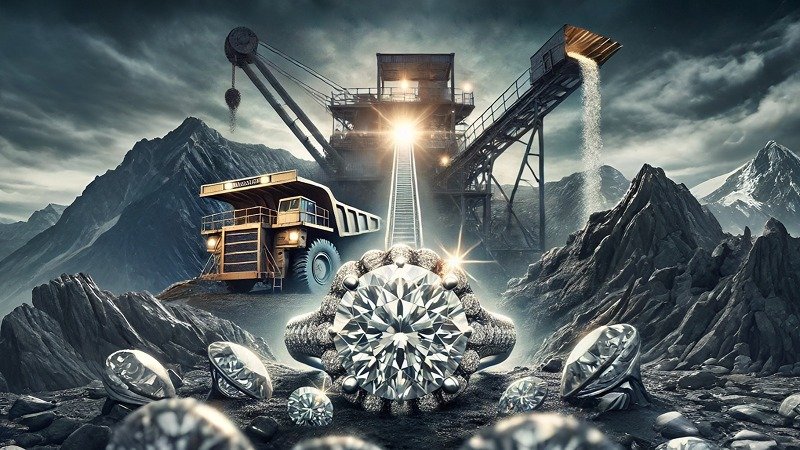
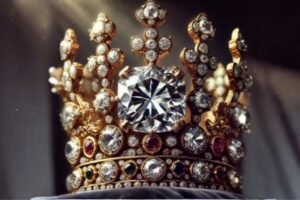 (The Kohinoor Diamond)
(The Kohinoor Diamond)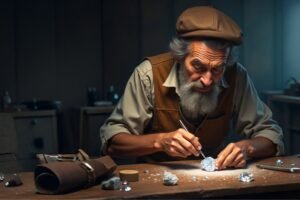
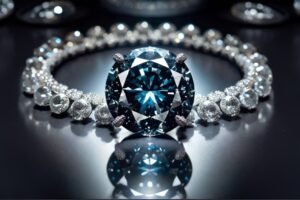 (The Hope Diamond)
(The Hope Diamond)
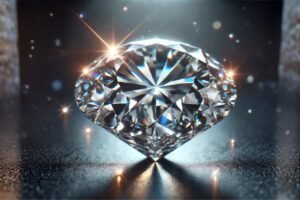 (Pure Diamond
(Pure Diamond